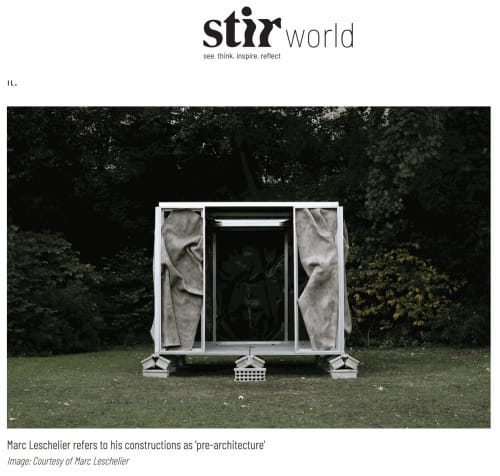Disenchanted by aspects such as these, Paris-based architect Marc Leschelier embarked upon disparate paths, to research and to build as a form of art. The Parisian architect, now also a sculptor, constructs without the intention of conflating his creations into habitable or usable spaces. The French sculptor scours spaces that are exempted from urban regulations, to utilise the 'construction process as a visualisation of one of architecture’s inner dimensions: the union in the masonry of opposing materials, the fluid and solid matter, the brick and the mortar.'
He believes that the nature of architecture is intrinsically linked to the dichotomous union of disparate materials and elements, and the complementary aspects that attribute contrasting entities. Leschelier refers to his way of building and sculpting as ‘pre-architecture.’
The French architect and sculptor constructs both permanent and temporary installations. His work, an expression of dualities that pervade the discipline of architecture, seeks to raise the question: what can architecture be if it is not designed for use? This query establishes architecture as a metalanguage, which is now employed by Leschelier to sculpt architectural installations evocative of construction sites. His latest creation, Pavilion X, is a demountable structure that was designed and built to be presented by Ketabi Bourdet gallery in the gardens of the Hôtel de Maisons, in Paris, France, as part of the Design at Large program for the first edition of Design Miami/Paris, held from October 17 to the 22, 2023.
Pavilion X, just like Leschelier’s other works, exists at the brink of sculpture and architecture. Aluminium frames are clad in cement textile that was previously crumpled and stiffened by the action of water. The sculptural installation, cuboid in shape, is decorated with uniquely configured panels on each face. “Each of the façade panels is unique, allowing the pavilion to contrast the plastic qualities of a sculptural form with those of a rational object. The function of the building is not defined, however, the user is offered a space that engages the impression rather than the use,” an excerpt from the press release mentions, describing the prefabricated installation.
--- click on the link to read the full article ---


